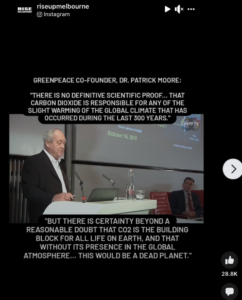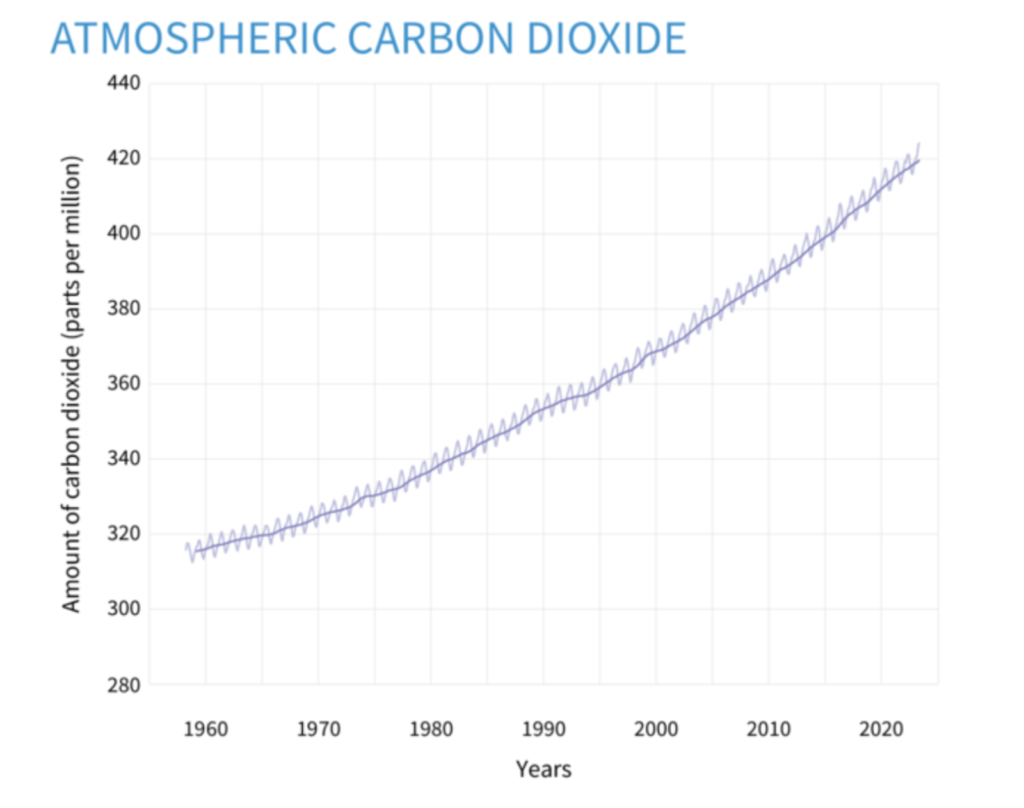Physical Address
23,24,25 & 26, 2nd Floor, Software Technology Park India, Opp: Garware Stadium,MIDC, Chikalthana, Aurangabad, Maharashtra – 431001 India
Physical Address
23,24,25 & 26, 2nd Floor, Software Technology Park India, Opp: Garware Stadium,MIDC, Chikalthana, Aurangabad, Maharashtra – 431001 India

By Aayushi Sharma
Claim: There is no definitive scientific proof through real-world observation that carbon dioxide is responsible for any of the slight warming of the global climate.
Fact: There is ample scientific data proving that carbon dioxide is responsible for warming of the global climate.
Claim link:
https://www.instagram.com/p/CtC4q3otlXa/
What we found:
On June 4, 2023, a post with hashtags #climatehoax and #climatescam went viral on Instagram. The post shared a video of a person addressing a forum and speaking his views on climate change.
In the video, he says, “There is no definitive scientific proof through real-world observation that carbon dioxide is responsible for any of the slight warming of the global climate that has occurred during the last 300 years since the peak of the Little Ice Age. If there were such a proof through testing and replication, it would have been written down for all of us to see.”
In the video, Patrick Moore, former president of Greenpeace International, Canada, has given misleading remarks and denied climate change.
This 2015 speech was posted online in 2023, and it did not address certain circumstances. The person who once held a position in Greenpeace, himself is in controversy for denying climate change and global warming.
What we found:
Patrick Moore, the guy portrayed in the film, was a co-founder of Greenpeace International and former president of Greenpeace Canada. After leaving the organization in 1986, Moore worked as a lobbyist for a variety of businesses and frequently spoke out against the environmental movement.
The Scientific proof:
According to NASA, Carbon dioxide (CO2) is a significant heat-trapping gas that results from the exploitation and combustion of fossil fuels (such as coal, oil, and natural gas), from wildfires, and from natural processes like volcanic eruptions.
Human activities have increased atmospheric CO2 by 50% since the start of the industrial era (in the 18th century), bringing it to 150% of its value in 1750. This is more significant than what naturally occurred 20,000 years ago at the conclusion of the last ice age.
According to Climate.gov,

The above graph shows monthly average carbon dioxide measurements since 1958 in parts per million (ppm).
Over the past million years or more, natural increases in carbon dioxide concentrations have periodically raised Earth’s temperature during ice age cycles. Due to fluctuations in the Earth’s orbit around the Sun and its axis of rotation, the warm episodes (interglacials) started with a little increase in the amount of sunshine reaching the Northern Hemisphere.

The graph shows global atmospheric carbon dioxide (CO2) in parts per million (ppm) for the past 800,000 years based on ice-core data (purple line) compared to 2021 concentration (dark purple dot).
According to the United Nations, “Most cars, trucks, ships, and planes run on fossil fuels. That makes transportation a major contributor of greenhouse gasses, especially carbon-dioxide emissions. Road vehicles account for the largest part, due to the combustion of petroleum-based products, like gasoline, in internal combustion engines.” However, emissions from ships and aircraft are still rising. The majority of carbon dioxide emissions related to energy come from transportation. In addition, statistics suggest that over the next few years, energy use for transportation will rise significantly.
According to the European Commission, the main source of CO2 created by human activity is global warming. By 2020, its atmospheric concentration had increased to a level that was 48% higher than pre-industrial (before 1750) levels. Smaller amounts of other greenhouse gasses are also released by human activity. Although methane has a shorter atmospheric lifespan than CO2, it is a more potent greenhouse gas. Like CO2, nitrous oxide is a long-lasting greenhouse gas that builds up in the atmosphere over many years to millennia. Aerosols like soot, which are non-greenhouse gas pollutants, have a variety of warming and cooling effects in addition to being linked to other problems like poor air quality.
References:
https://climate.ec.europa.eu/climate-change/causes-climate-change_en